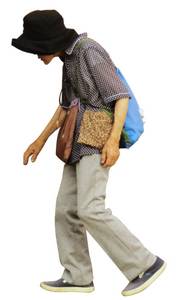Signs and Symptoms of Osteoporosis
What are the Symptoms of Osteoporosis
Osteoporosis is often referred to as the ‘silent disease’. This is because the signs and symptoms of osteoporosis are not usually obvious until a person has suffered a fall that has led to a bone breakage.
The condition can also be identified at an earlier stage through the use of bone mineral density (BMD) tests that are often part of an annual medical once a person has reached a certain age (the age that a person should have routine BMD tests varies between different countries, and is also dependent on a person’s risk factors).
There are many risk factors associated with the condition, some of these, such as diet, exercise, alcohol intake, and smoking can be improved by lifestyle choices. Other osteoporosis risk factors are outside of your control, these include: ethnic background, being a woman, having a petite frame, early menopause, and a family history of the condition.
Signs and Symptoms of Osteoporosis
Although most people are diagnosed with osteoporosis following a fragility fracture or a BMD test, there are other signs of osteoporosis that you may also wish to look out for. If you suffer from any of the below then it is recommended that you discuss what are the symptoms of osteoporosis with your doctor:
- Loss of height, and/or stooping
It is often the case that people with compression fractures in the spine consider them a standard back pain or a strain. When spine vertebrae weaken and compress they are unable to fully support the body in an upright position. This leads to a person stooping, and there is often an associated lack of height. This phenomenon (hyperkyphosisis) is often referred to as dowager’s or widow’s hump.

- Bone or Joint Pain
There is not usually any pain associated with the early stages of thinning bones. As spinal compression fractures occur, there can be an associated raise in bone and joint pain. In some cases, compression fractures can lead to chronic back pain.
- Low impact fractures
People with osteoporosis have weaker and brittle bones. When a person loses balance, they may naturally reach out to support themselves. For a non-osteoporotic person with strong bones this is not a problem. However, in a person with osteoporosis this simple low impact reaction may lead to a broken wrist. People with osteoporosis are much more susceptible to fractures of the wrist, hips and spine.
- Dental X-ray
A routine dental examination may show signs of bone thinning in the jaw.
Detection of Osteopenia and Osteoporosis Before the Occurance of Symptoms
Osteoporosis and osteoporosis are often diagnosed following a BMD test performed by a DEXA scan and/or quantitative ultrasound before any visual signs and symptoms of osteoporosis are present.
This is a non-invasive procedure and results are given as a T-score based on the bone strength reference of a young adult. As people lose bone mass and density when they age this is usually a negative number. People with a T-score of –1 or higher are considered to have healthy bones. Scores of –1 and less are indicative of thinning bones. A T-Score of –1 to –2.5 is indicative of mildly thinning bones and defined as osteopenia; People with osteopenia are usually encouraged to improve their diet and given a weight bearing exercise program to follow. A T-score of –2.5 or less is indicative of osteoporosis and should be treated; depending on your personal circumstances, this may require the use of osteoporosis drugs and/or lifestyle changes.